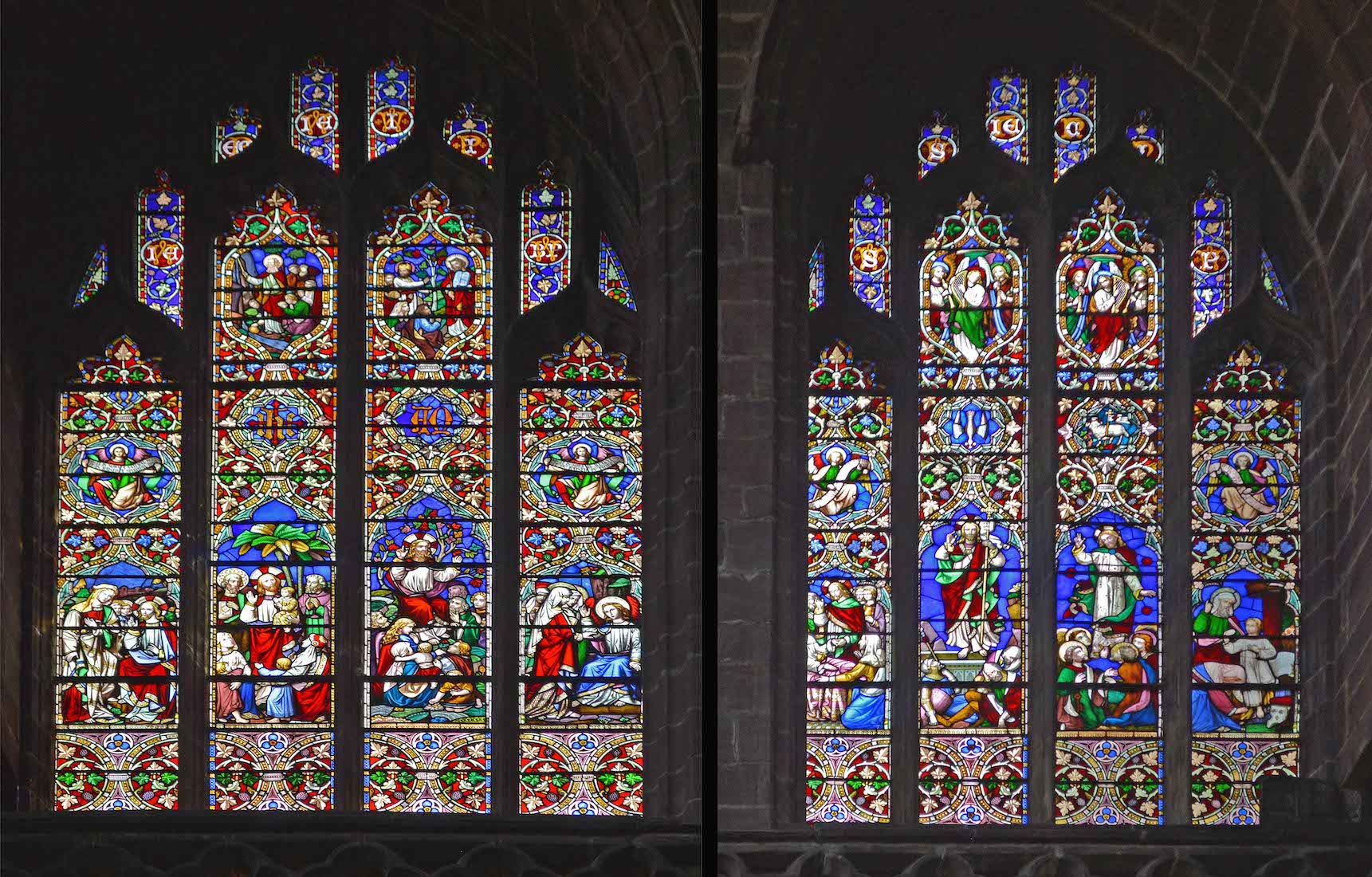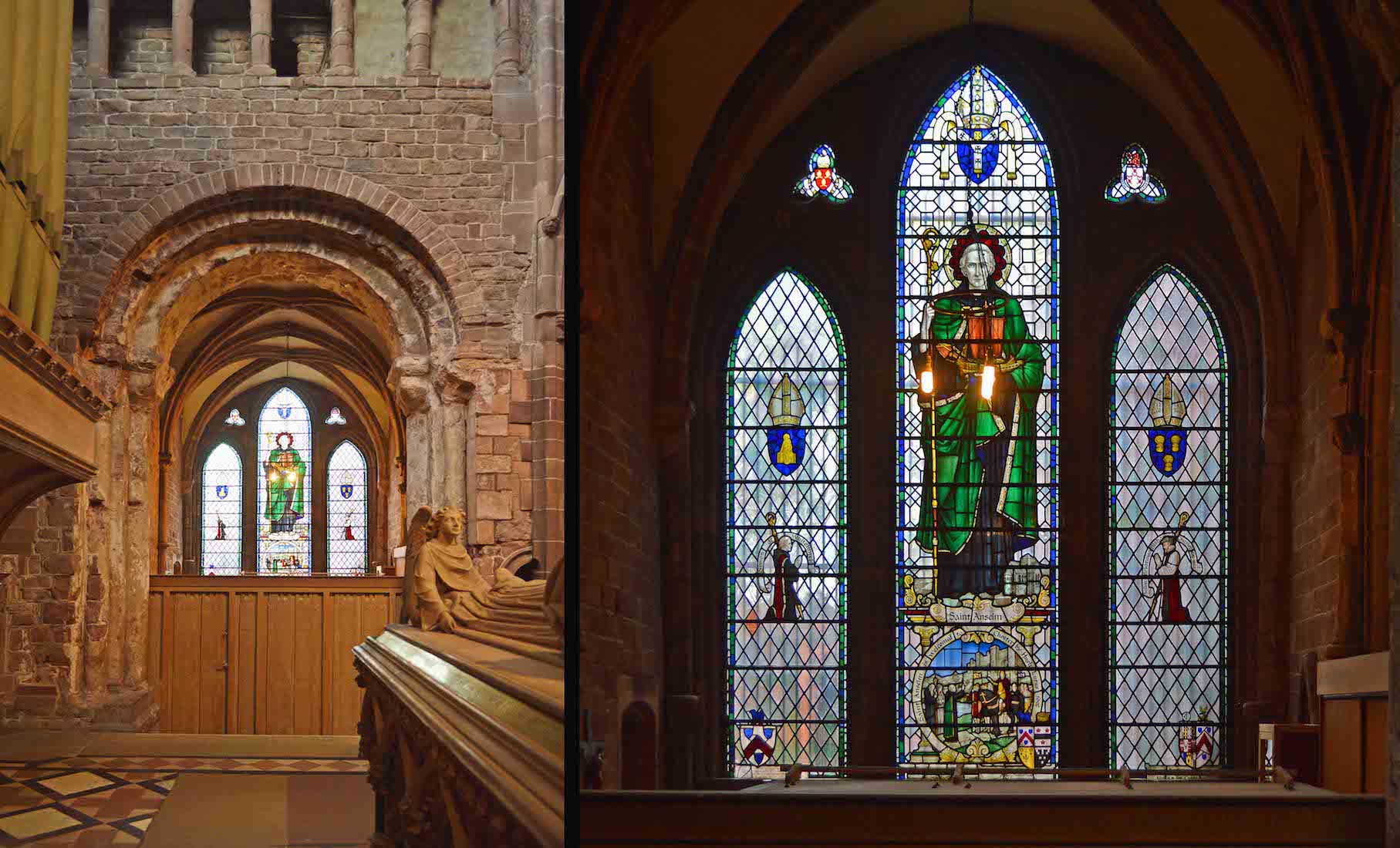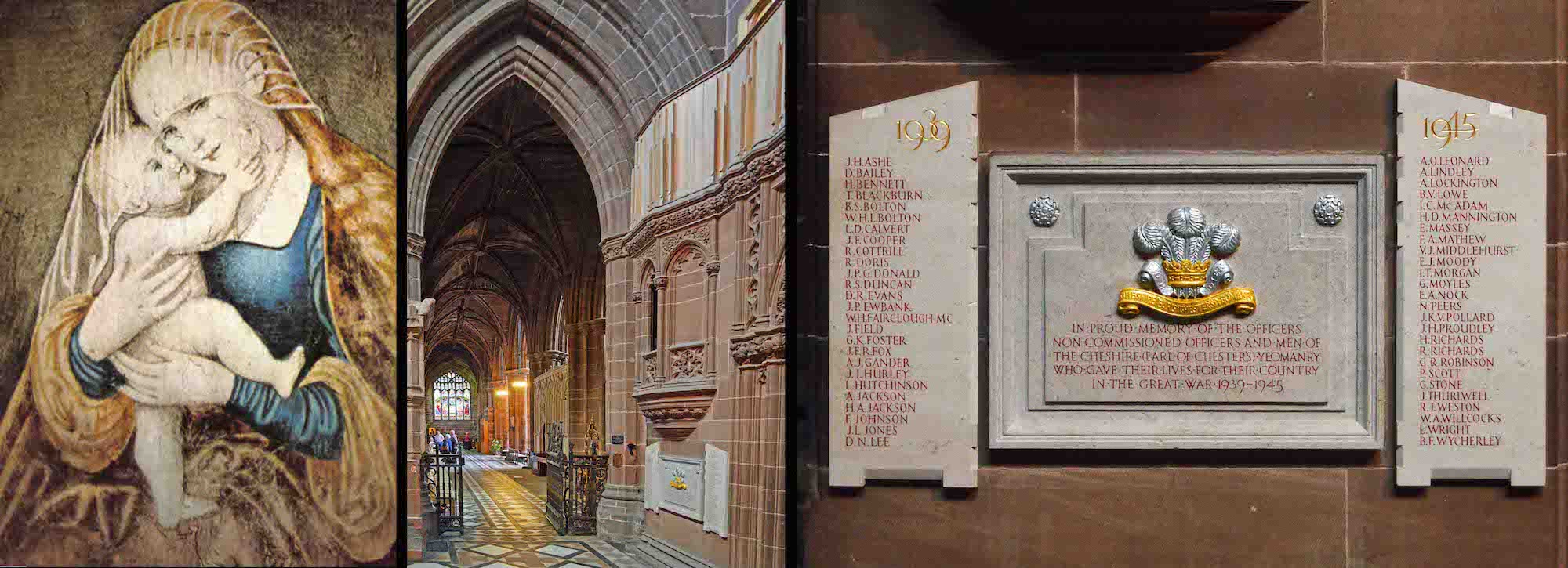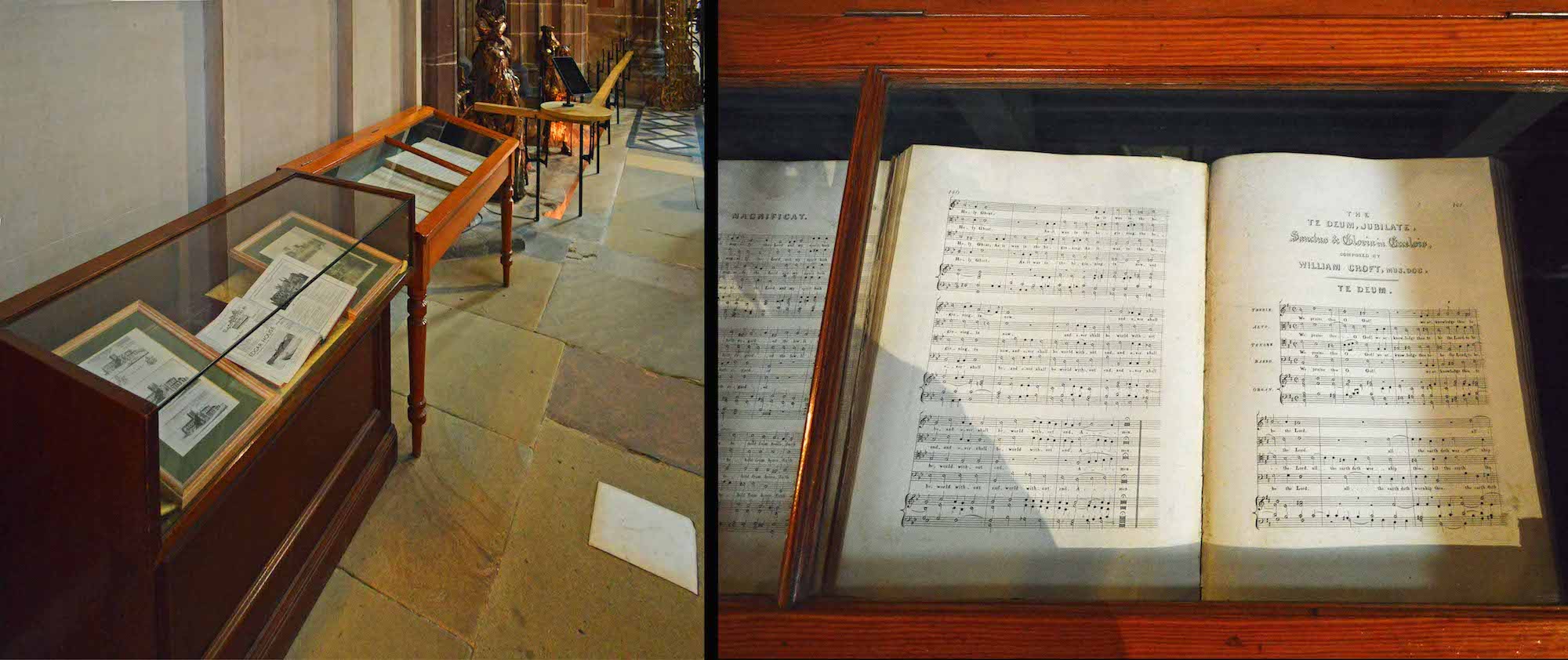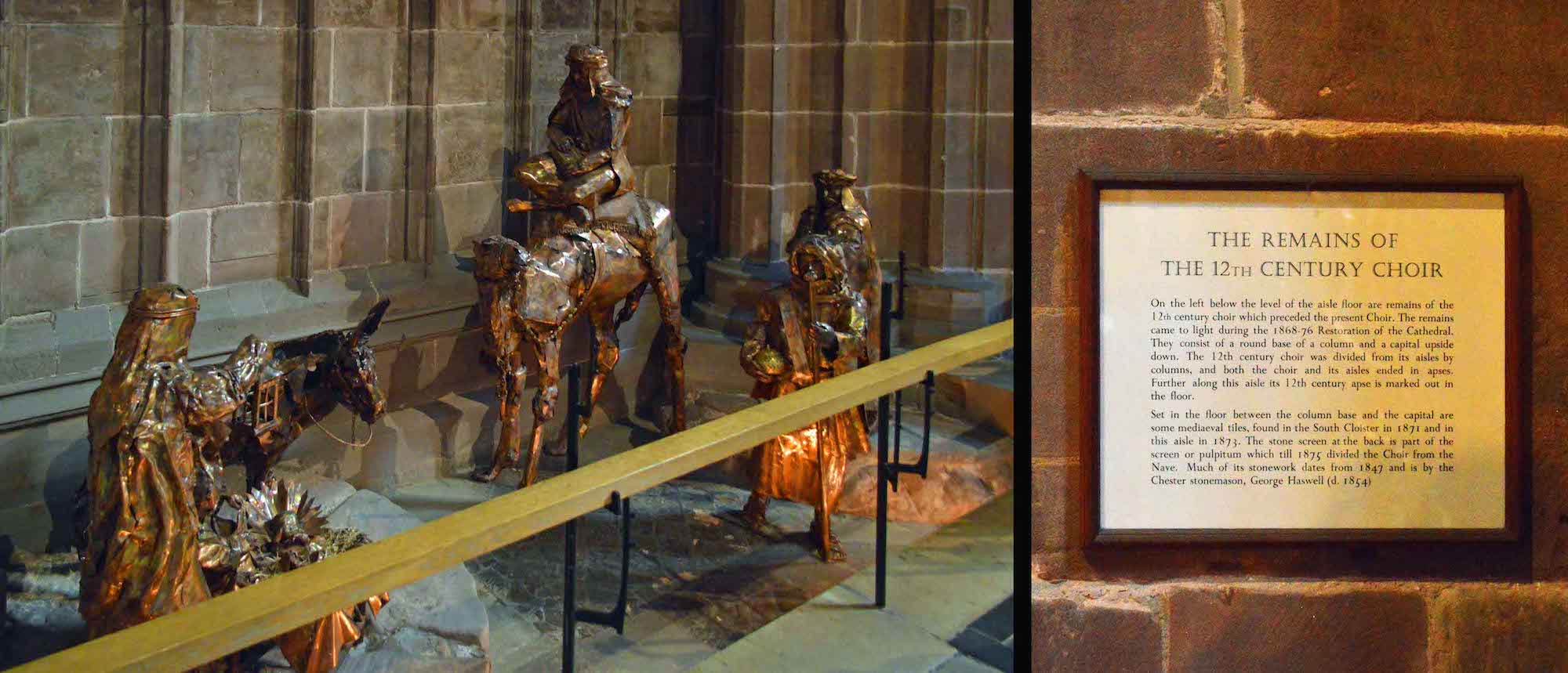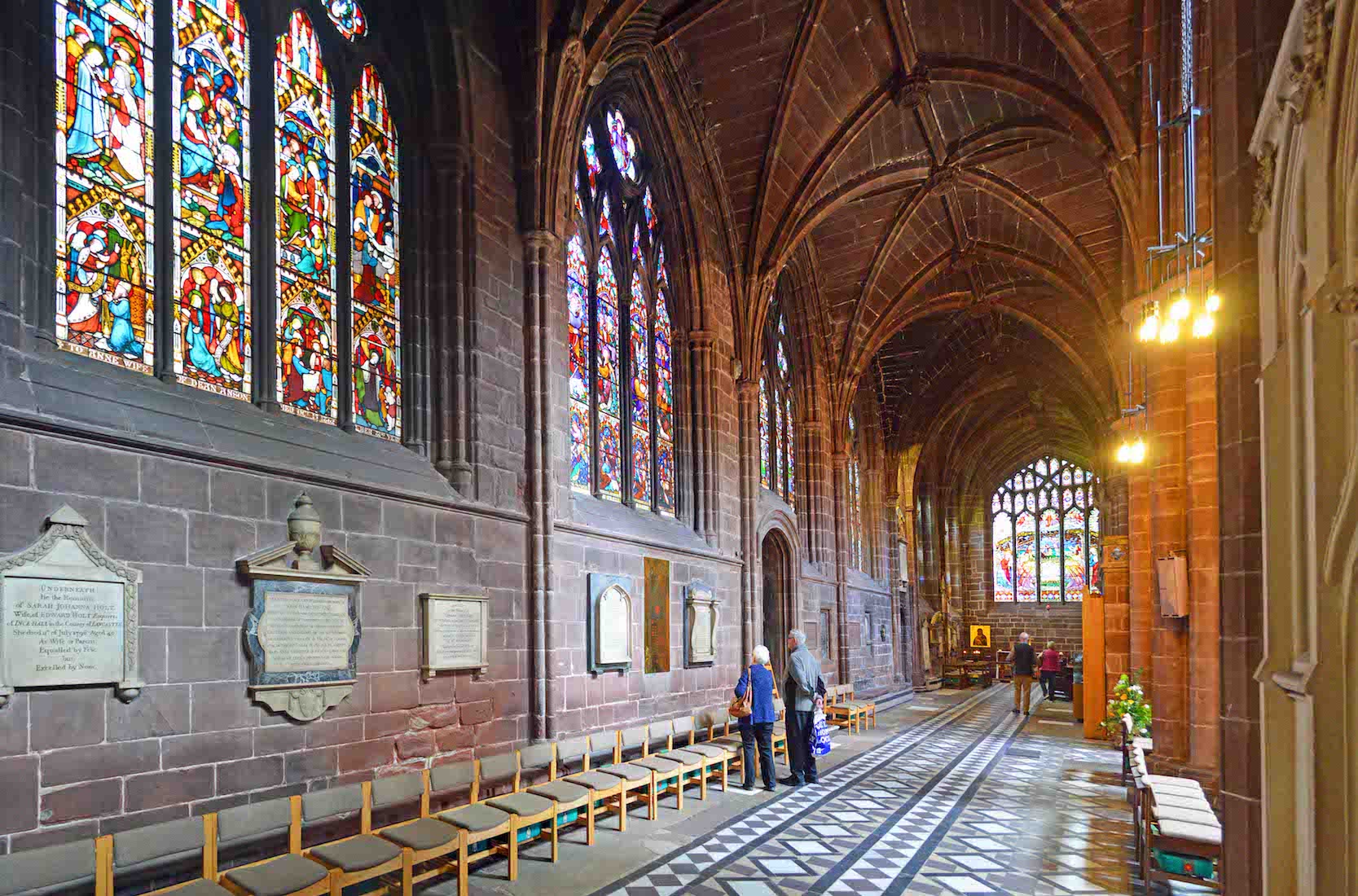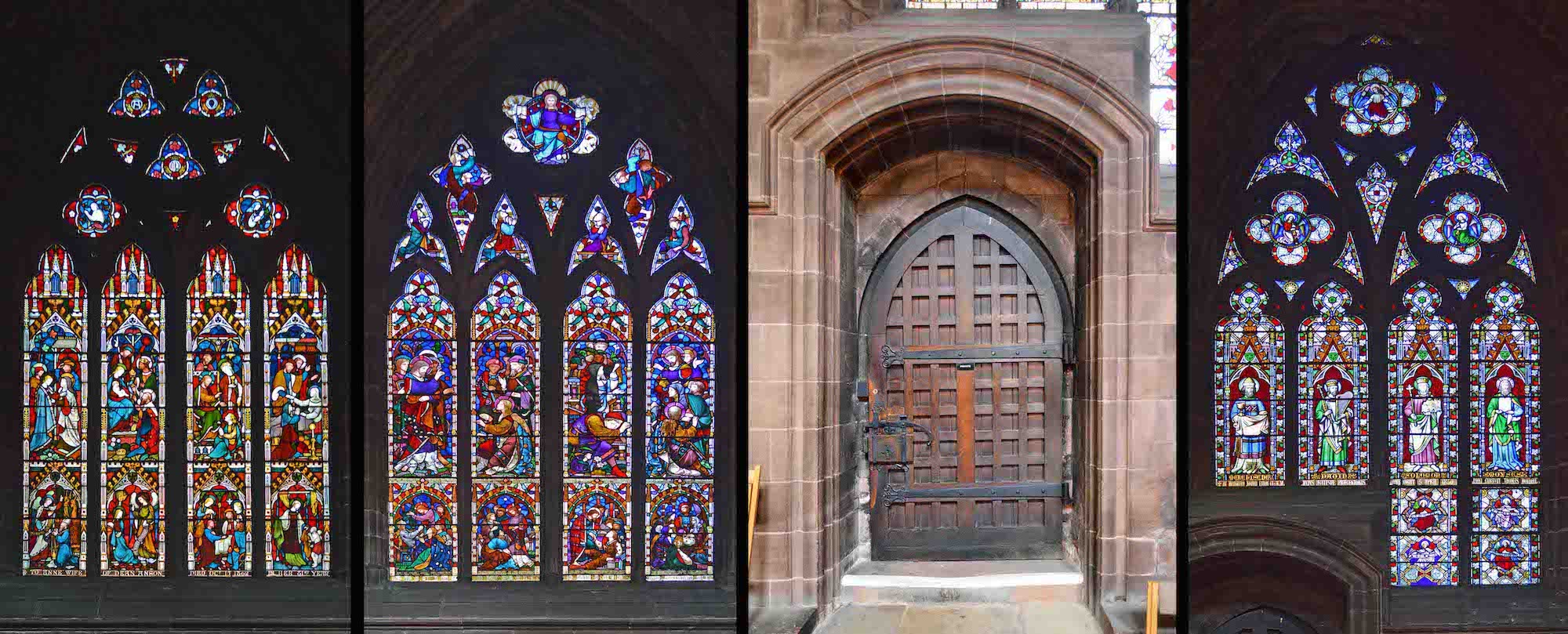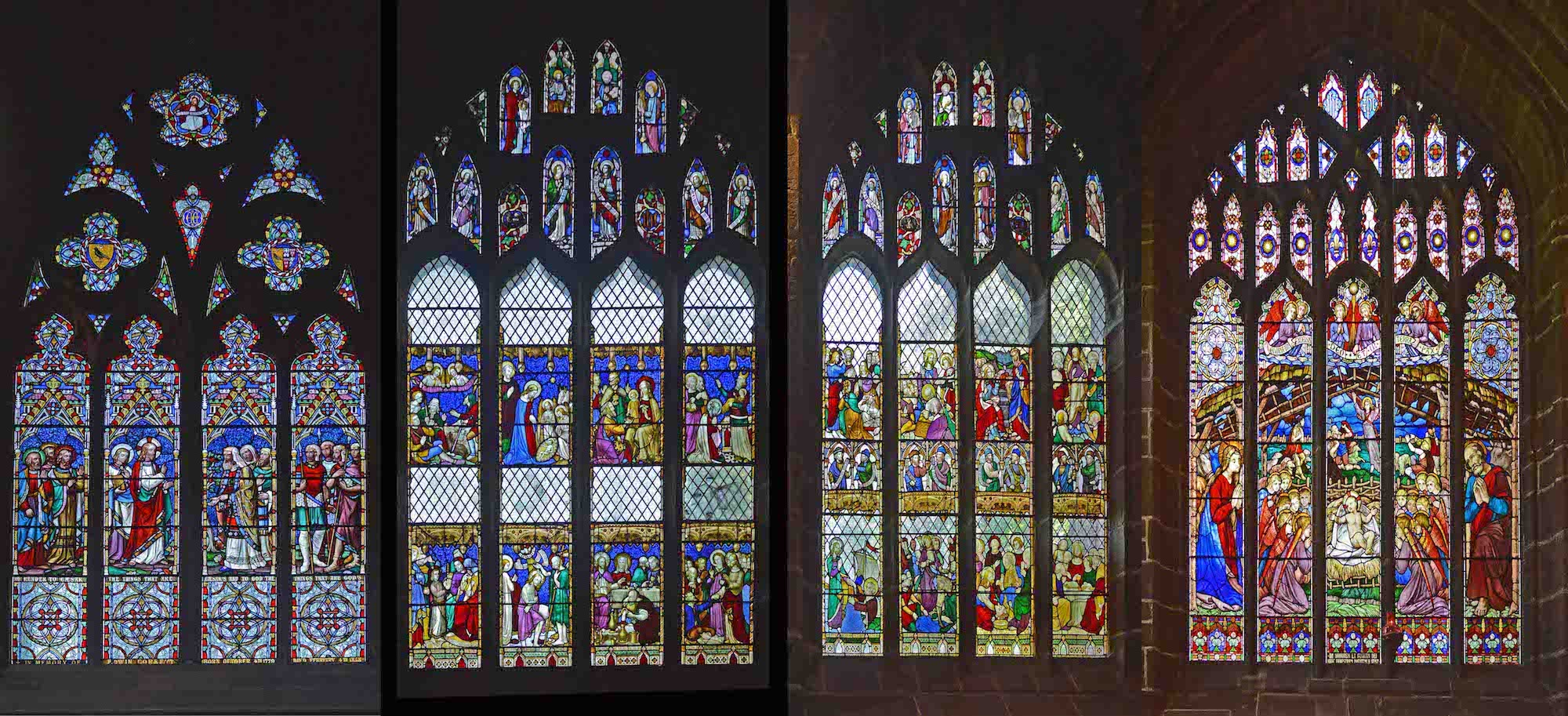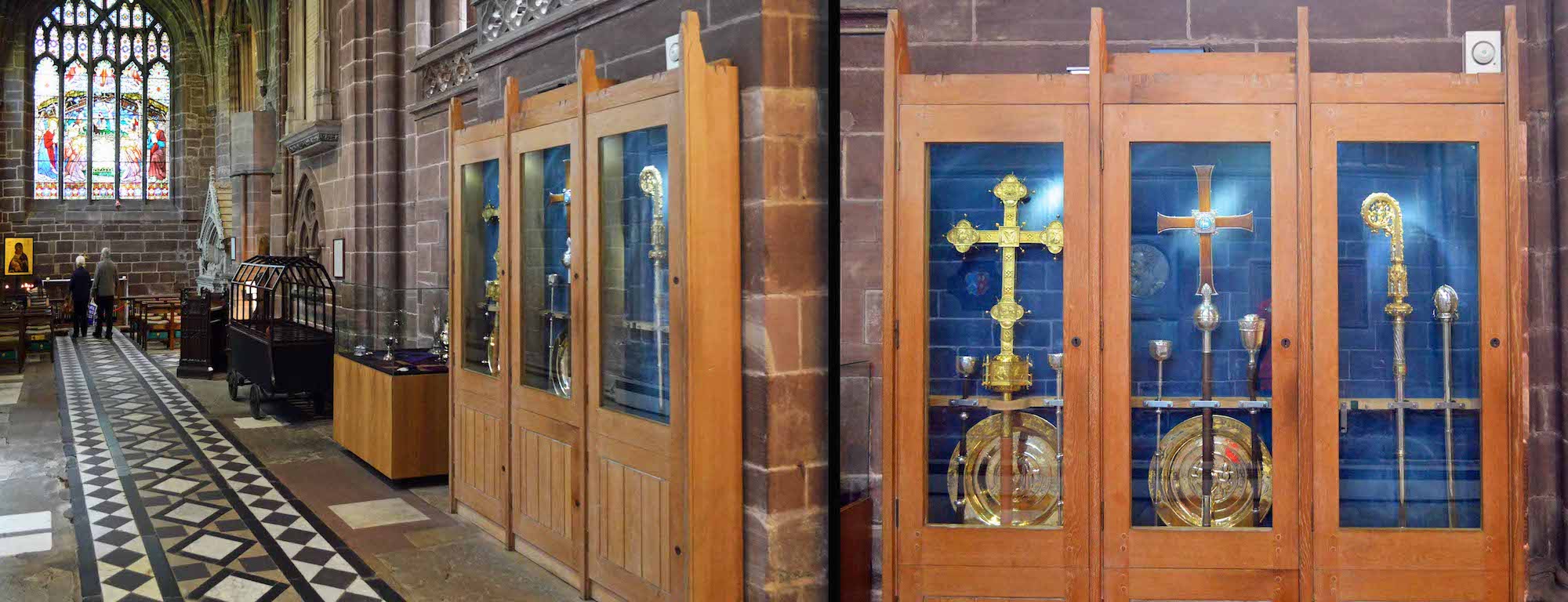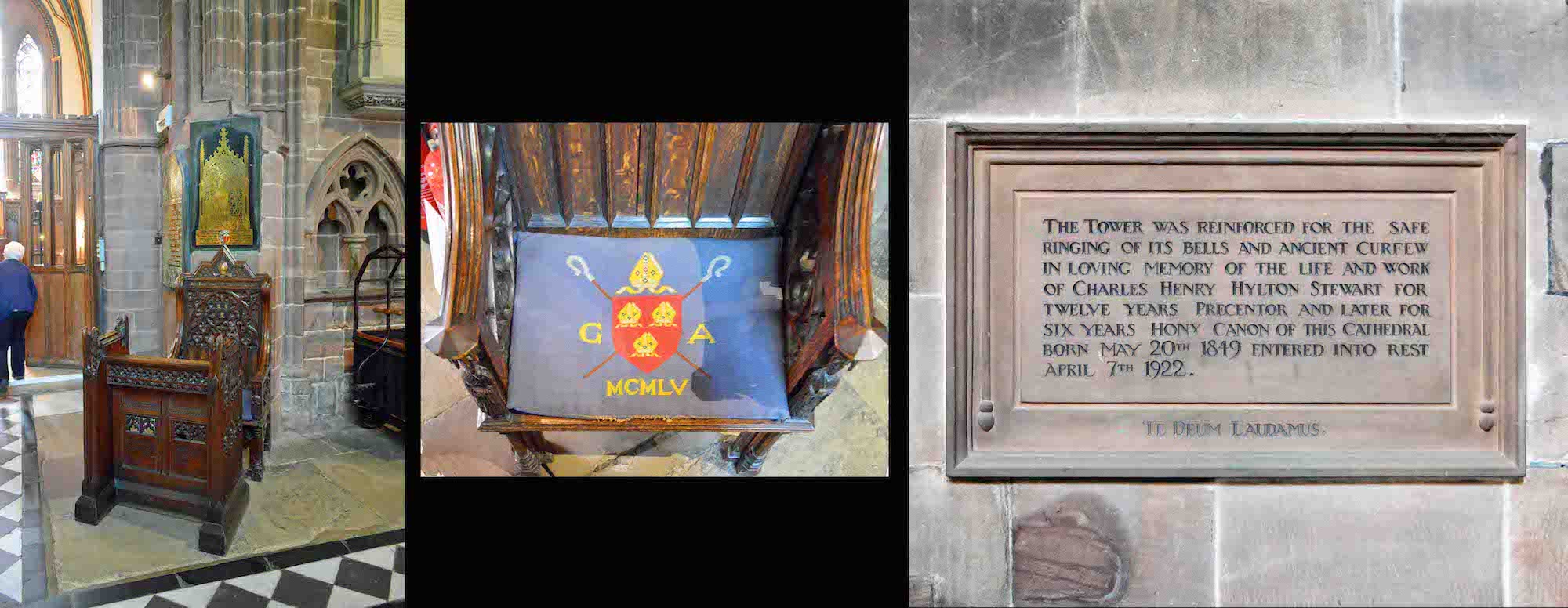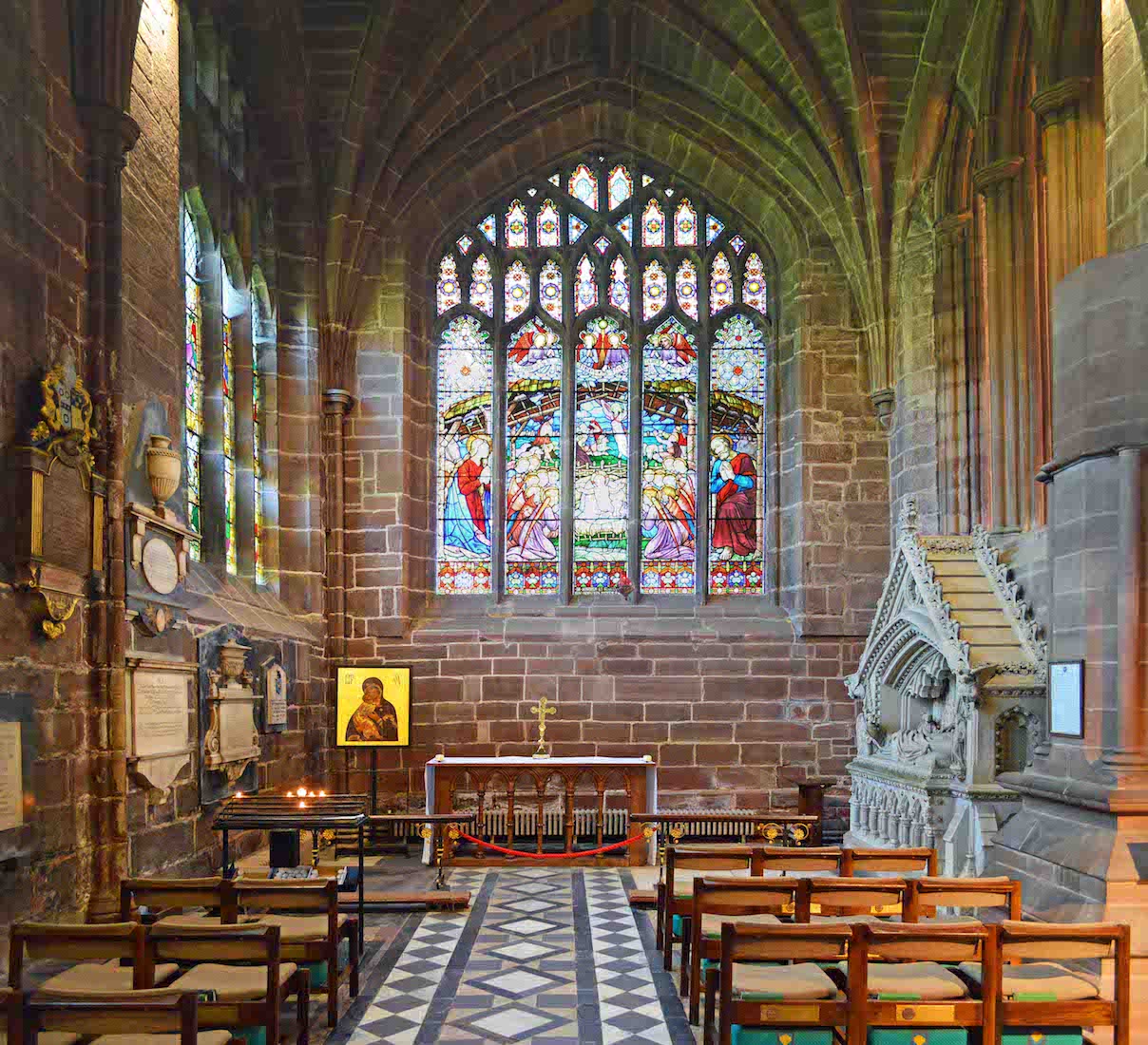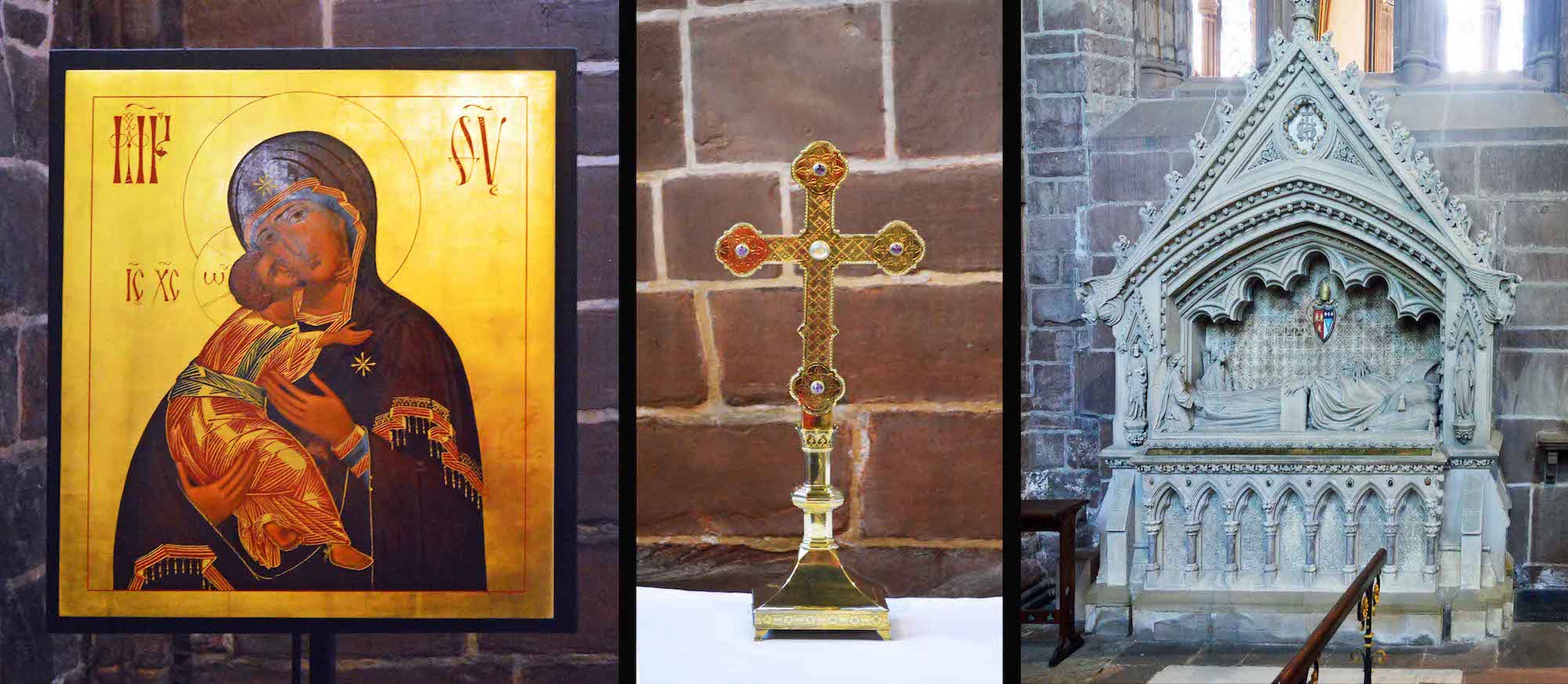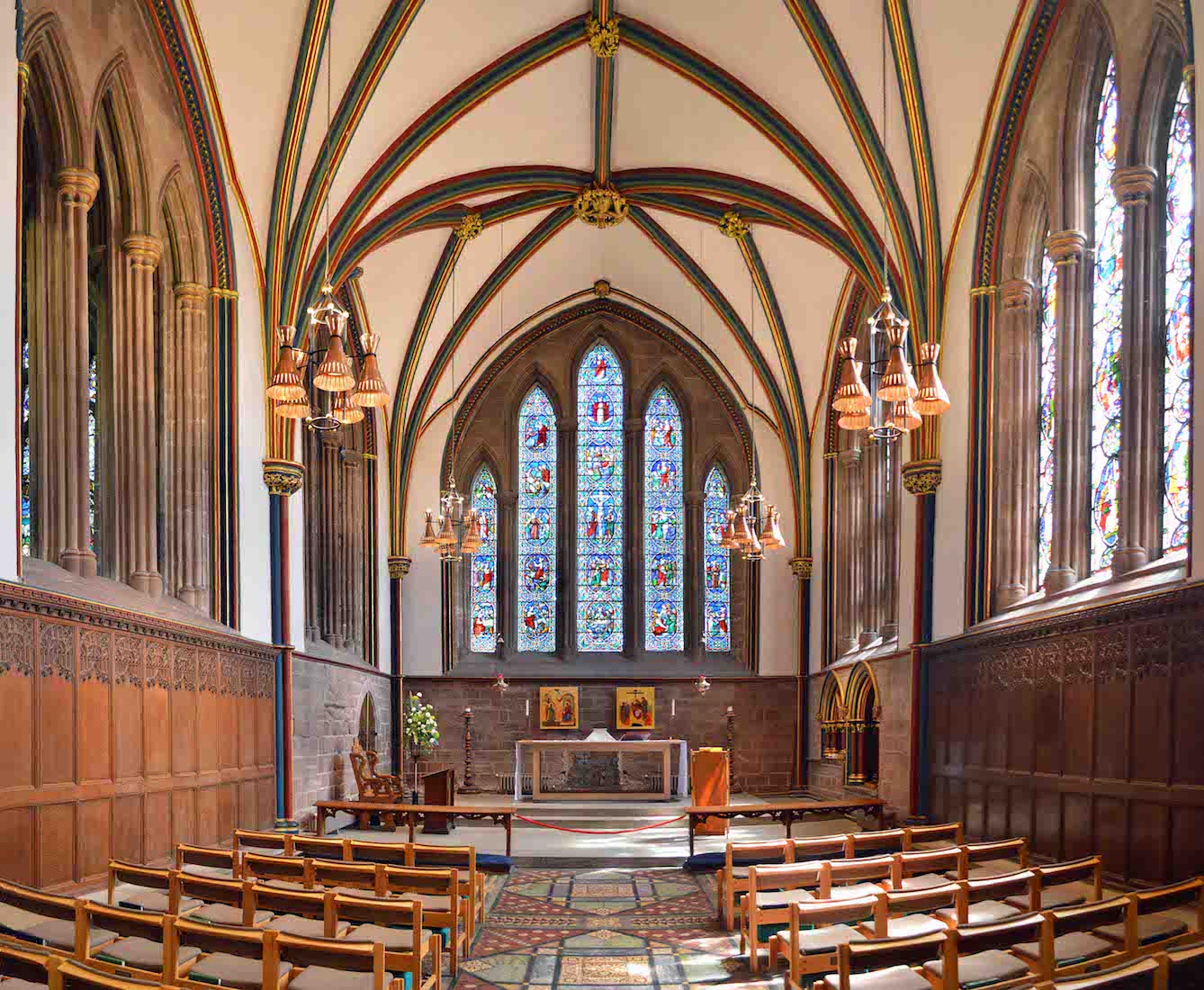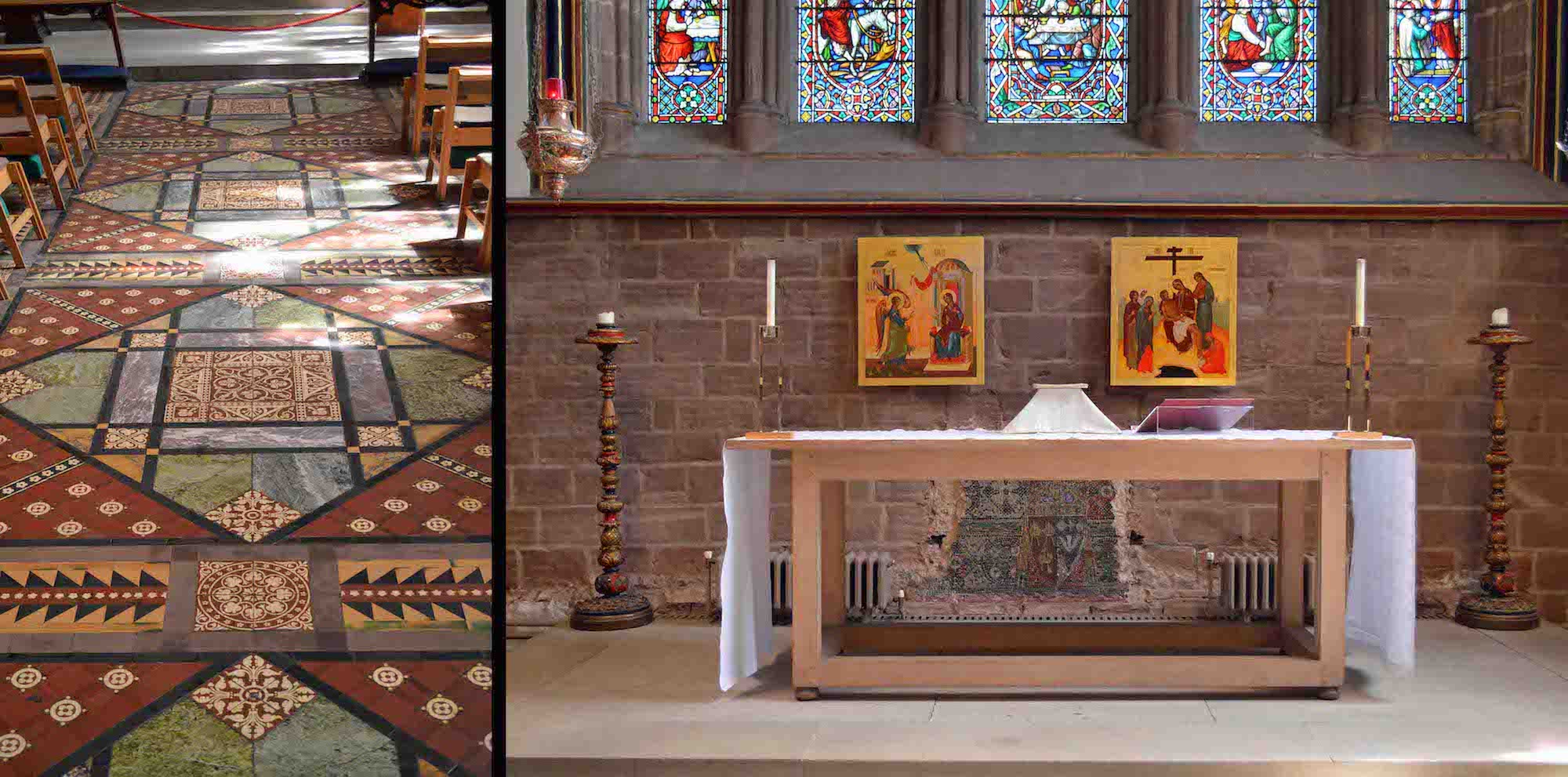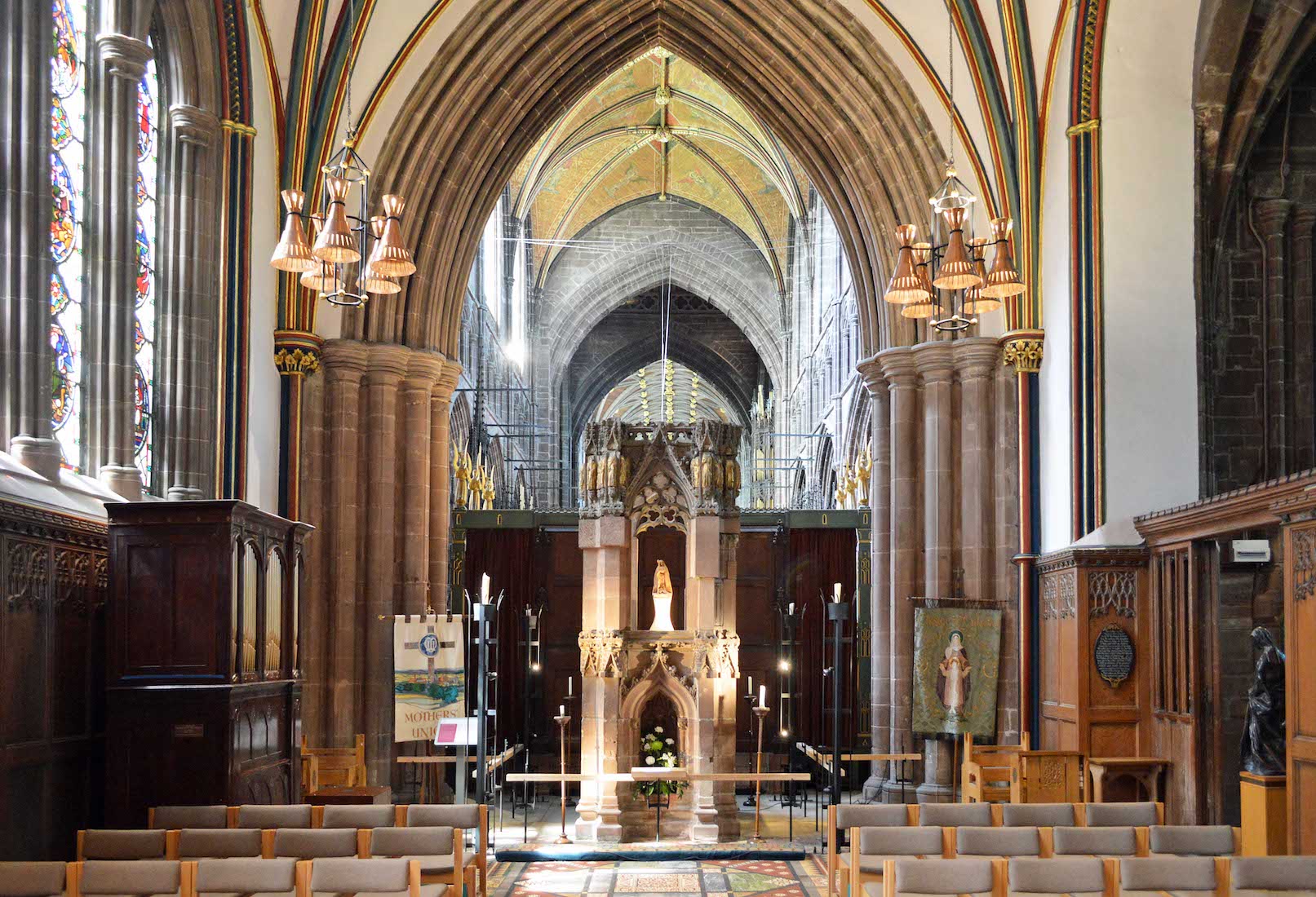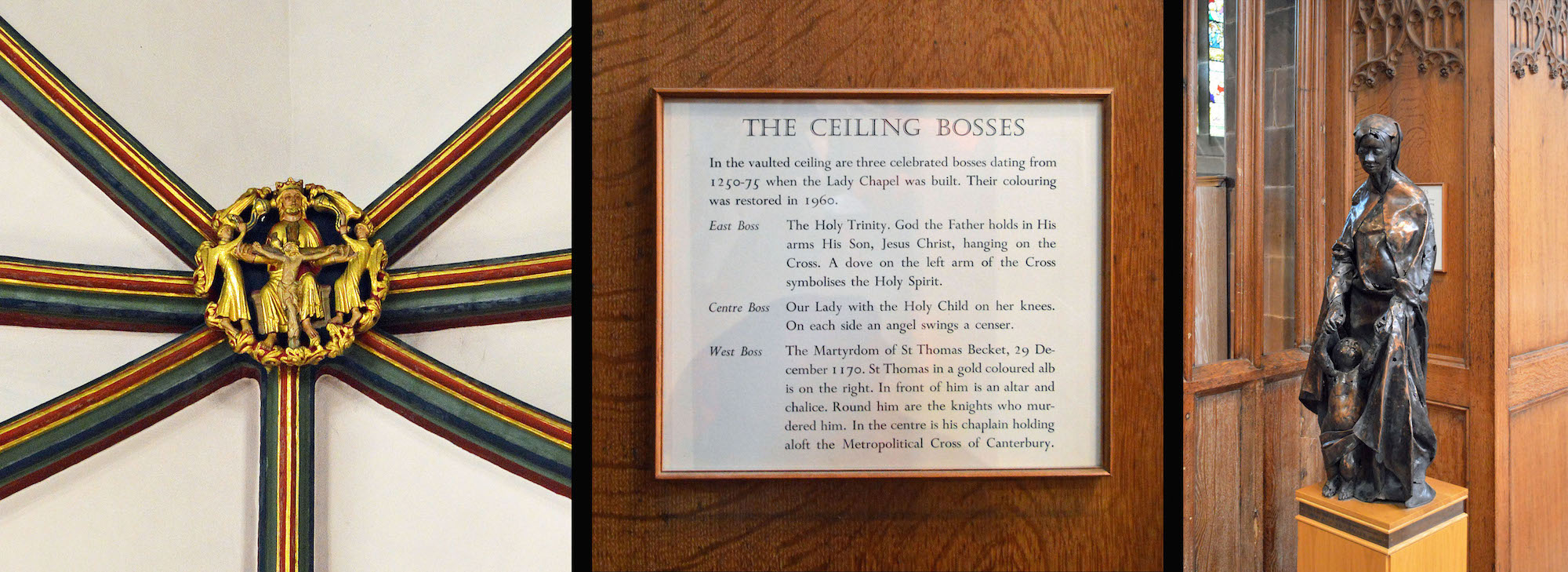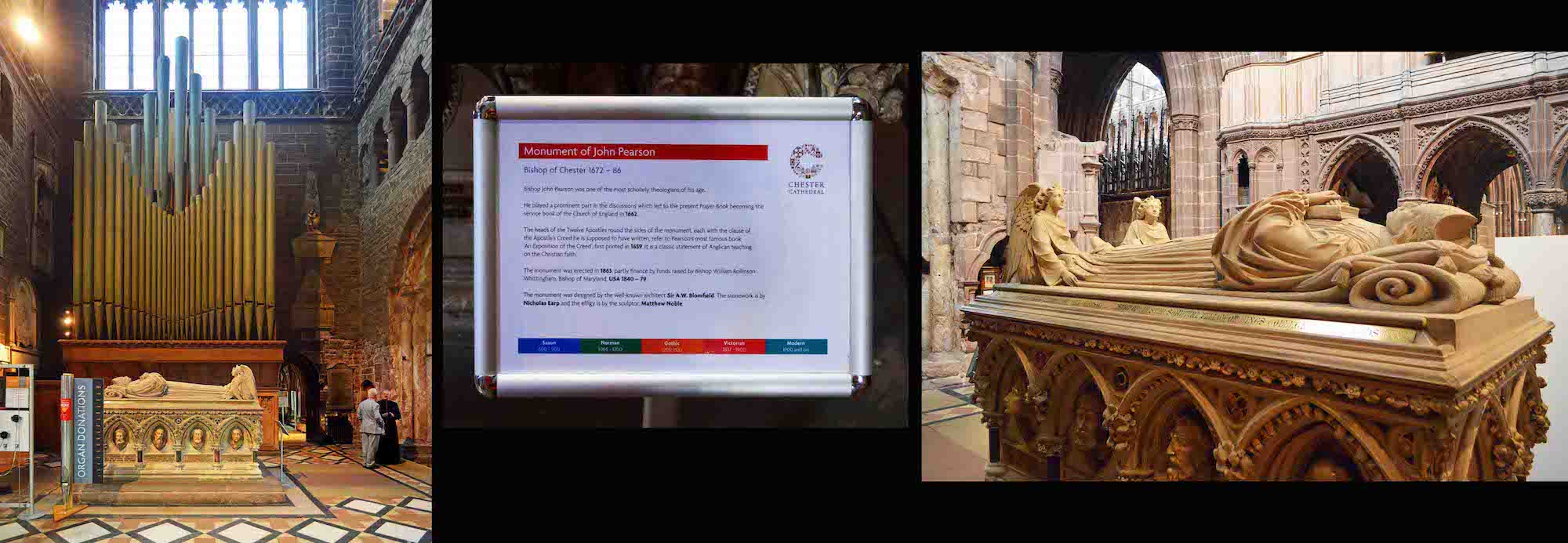
We walk beneath the organ into the North transept. In Chester Cathedral this transept is quite emaciated, being restricted by the cloisters and the chapter house with its vestibule. The most noticeable object in this transept is a freestanding tombchest monument to Bishop Pearson who died in 1686, designed by Arthur Blomfield and carved by Nicholas Earp, with a recumbent effigy by Matthew Noble. PLAN
62. TRANSEPT CEILING AND WINDOWS
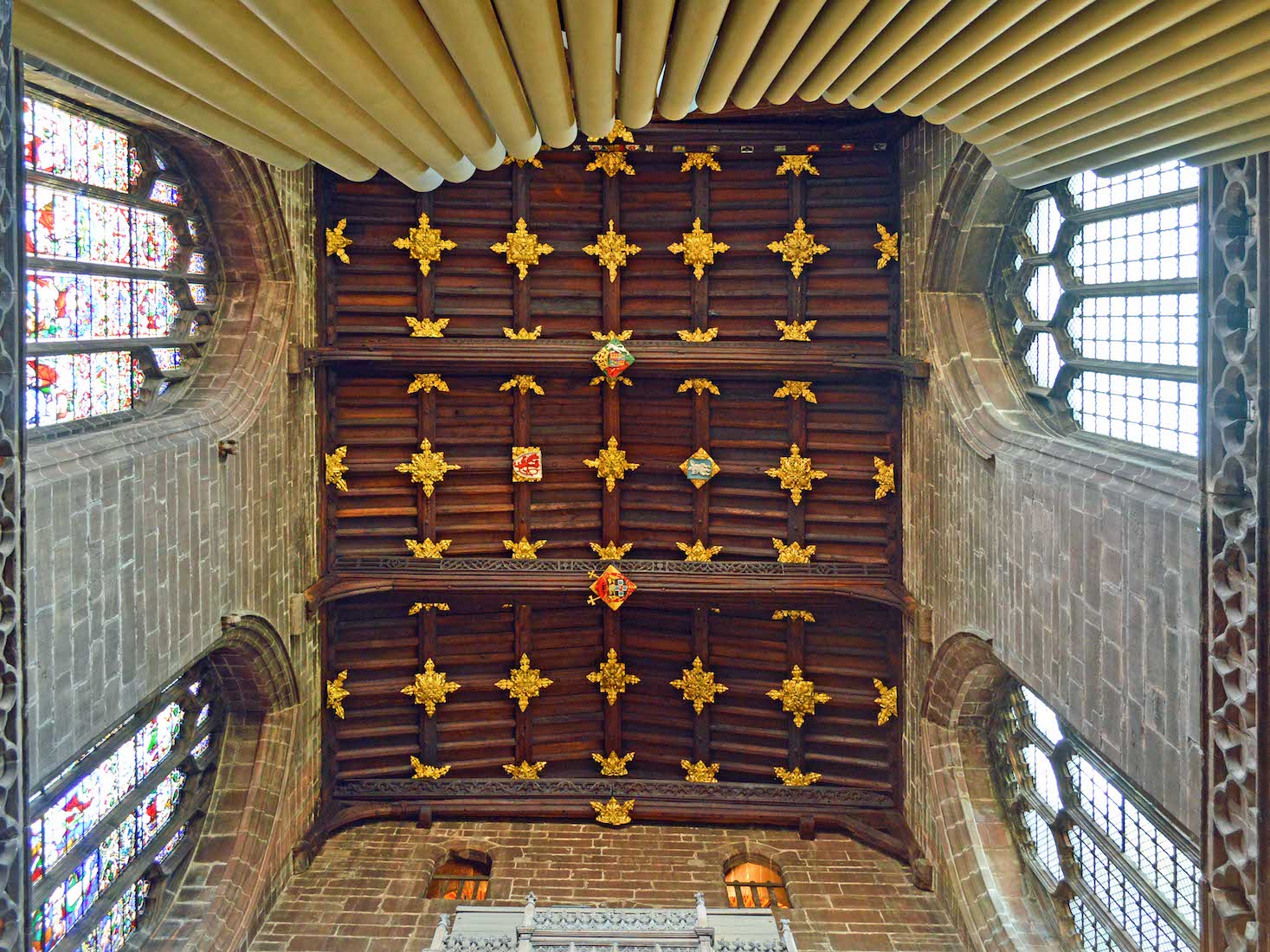
The small Norman transept has clerestory windows containing stained glass by William Wailes, installed in 1853. The roof is the only easily seen medieval roof left in the cathedral. It was built between 1509 and 1529 and on it are the arms of Henry VIII and of Cardinal Wolsey.
63. TRANSEPT CLERESTORY WINDOWS
There are stained glass windows installed in the East clerestory of the transept. These are detailed and brightly coloured, and give a somewhat fanciful representation of scenes from the life of Christ.
64. SACRISTY
Just East of the North transept is a small Norman sacristy, dating from 1200. The 11th century rounded arch is the oldest part of the Cathedral. The sacristy has an East window depicting St Anselm, and designed by A. K. Nicholson. Anselm became the Abbot of Bec in Normandy. He made three visits to England, and during one of these founded the priory at Chester. He became Archbishop of Canterbury in 1093. The vestments are kept in the sacristy.
65. ENTERING THE NORTH QUIRE AISLE
From the North transept we move to the North quire aisle. On our right as we approach the arch, we notice a memorial. This is in memory of the men and officers of the Chester Yeomenry who gave their lives in World War II. There is a list of names. On our left is the famous cobweb picture of the Madonna and Child, painted on the web of a caterpillar.
66. NORTH QUIRE AISLE DISPLAYS
On our right as we enter the quire aisle are display cabinets and an interesting sculpture. On display are various Cathedral items, and some old music.
67. CORNER SCULPTURE
In the corner is an interesting depiction in copper of the arrival of the Magi. There is also a sign telling about finding the remains of the 12th century choir – the round base of a column and an upside-down capital..
68. NORTH QUIRE AISLE
This aisle is uncluttered with stained glass windows along the North wall, monuments below, and seating – appreciated by visitors! At the far end we see a chapel.
69. NORTH QUIRE AISLE WINDOWS I
The two windows at left show scenes from the life of Jesus, beginning with the Annunciation. Beyond these is a wonderful old wooden door – unfortunately with no access. And fitting around the top right of this door a further window with the figures of Melchisedec, David, Solomon and Moses.
70. NORTH QUIRE AISLE WINDOWS II
And four more windows along this side. From left the first window pictures Jesus teaching on ‘Render unto Caesar the things that are Caesar’s and to God the things that are God’s’. The next two windows contain a sequence of panels on the life of Jesus: briefly, the shepherds, the birth, the magi, presentation in the temple, the boy Jesus teaching, baptism, Cana wedding, healing, ... , Palm Sunday, foot washing, Last Supper. The window at right is actually in the East wall of the end chapel. It is a spectacular Nativity window created by Michael Connor in the mid 19th century.
71. QUIRE AISLE, SOUTH WALL
As we approach the end chapel, on our right we have a cabinet of Cathedral treasures, a wheeled wagon suitable for carrying a coffin, and just visible beyond, the cathedra.
72. CATHEDRA
The cathedra is a (generally uncomfortable!) chair used by the bishop. It indicates that this is the bishop’s 'home' church. The word ‘cathedra’ comes from the Latin, meaning ‘seat’ or ‘throne’, and it is from here that the title ‘cathedral’ for this Church comes. Nearby is an interesting historic plaque about the reinforcing of the tower.
74. ICON, CROSS, TOMB
The icon is the Feodorovskaya Icon of the Mother of God also known as Our Lady of Saint Theodore, and, the Black Virgin. Mary of Russia is the patron icon of the Romanov family and one of the most venerated icons in the Upper Volga region. The tomb at right is that of Bishop John Graham. He was an English churchman and academic, and was Bishop of Chester from 1848 to 1865.
75. LADY CHAPEL
We move to the adjacent Lady Chapel. This chapel is bright and airy and dates from the 13th century. We observe the large blue Eastern window, the two icons, and the simple altar. At left is an aumbry, and at right a priscina – a stone basin for draining water used in the Mass.
76. AISLE, ICONS AND ALTAR
The central aisle has some special tiling. The icons depict the Annunciation (at left) and the taking down of the body of Jesus from the Cross (at right). Behind the altar are the remnants of an old fresco.
77. LADY CHAPEL WINDOWS
The windows in the Lady Chapel are by William Wailes. The East window illustrates the Passion and Resurrection; in the side windows are scenes from the lives of SS. Peter and Paul. The West end of the Lady Chapel has an entirely different focus: the shrine of St Werburgh.
78. ST WERBURGH SHRINE
The original design of the shrine is unknown. The shrine, which is made of a similar red sandstone as the Cathedral has undergone at least two physical transformations in its long history. It was enlarged around 1340, apparently because of its popularity as a place of pilgrimage and reported miracles. The shrine was smashed in 1538 by King Henry’s reformers. In the 1620s it served as the burial place for Bishop Downham, and in 1635 the base and part of the upper section were adapted to make a throne for the bishop. The shrine was restored in 1888 by Arthur Blomfield.
79. SHRINE DETAILS
The upper part of the shrine is decorated with statues of the royal houses of Mercia, Kent and others associated with St Werburgh. The statues each carry a scroll which should bear their names although many of these cannot be read. On each side of the shrine stands a banner: a Mothers’ Union banner at left, and a Cathedral banner at right.
80. BOSS AND STATUE
There are three special ceiling bosses in the Lady Chapel: they are described on the information panel. The Eastern boss depicting the Trinity is shown at left. The Holy Spirit is represented by the dove on the arm of the Cross. A sculpted figure of St Werburgh stands close by.


